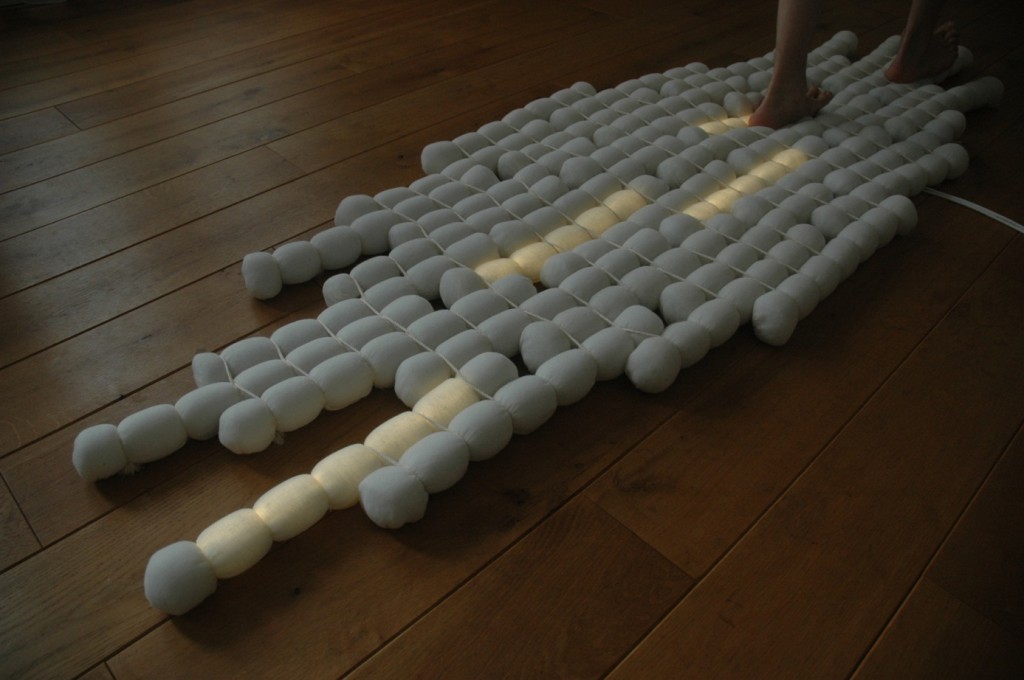Human Tracks is an interactive carpet that I created together with Frits Klok, a collegue of mine at TNO. Human Tracks shows your footsteps on the carpet. When someone walks over the carpet, their footsteps are highlighted for a couple of seconds, leaving a trail of light after them. When many people have followed the same trail, the light in that trail glows for a longer time: the carpet then shows where most people have walked, analogue to a grass field in which the trails of people become visible by the flattened grass.
The sensor consists of 3 layers: one layer of Velostat between two layers of copper fabric. The Velostat is sensitive to pressure: its resistance drops if it is under pressure. The program in de PIC chip is constantly measuring the resistance between the two layers of copper fabric and comparing it to it to the initial resistance when the carpet was turned on and no one is standing on it. That way, the electronic component can conclude when someone is standing on the carpet element. Each element is capable of two different behaviors:
- When someone stands on the element, the electronics powers the LED strip and lets the LEDs burn a couple of seconds (e.g. 5), before slowly turning them off. This results in the effect that someone’s footsteps are shortly highlighted in the carpet behind them.
- When someone stands on the element, the electronics increases a counter. This counter is acting like a ‘leaking bucket’. Each time someone stands on the element, one drop goes in. During time, each predefined number of seconds, a drop goes out. If the level in the bucket (i.e. the value of the counter) exceeds a predefined level, the LEDs in the element are turned on. The burn at a lower brightness (30%) than in behavior 1. This results in the effect of elements that have been walked on relatively often, being softly highlighted, showing the most popular routes (‘hotspots’) taken on the carpet.
Behavior 1 and 2 can be combined. When an element is softly lit (behavior 2) and someone stands on it, it will be lit strongly for a couple of seconds (behavior 1) before going back to a softly lit state.
